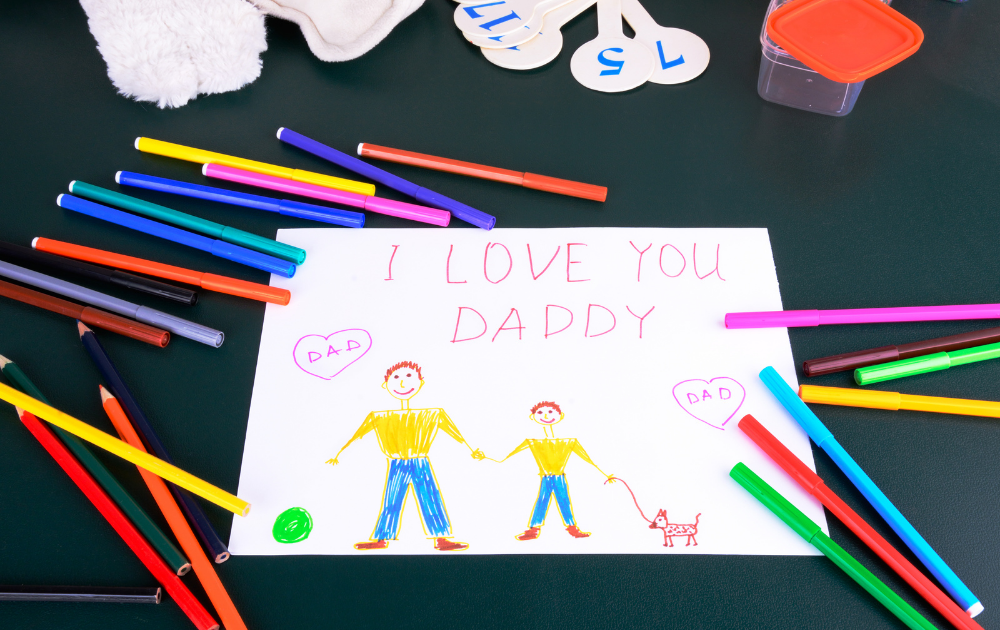
11 Feb The 5 Love Languages Of Children: Which One Does Your Child Speak?
People demonstrate love in many different ways. Some communicate their love with gestures, while others communicate love with words and phrases that leave little doubt about their feelings, phrases like “I love you.”
Children speak different love languages just like adults do.
Do you know which one your child speaks? And do you understand what they’re saying to you?
In 1992, Dr. Gary Chapman, Ph.D. and marriage counselor, published a bestseller, “The Five Languages Of Love.” In the book, Chapman theorized that there are five separate and distinct love languages. Though Chapman’s book was largely for adults, children employ love languages too. And every child predominantly uses one love language to express their feelings.
In this article, we outline what those five languages are, and suggest ways for you to recognize and respond to the language your little one is speaking.
1. Words of affirmation.

Children who communicate love in this way, by saying “I love you” over and over again to you, need to hear those words repeated back to them a great deal. They may frequently ask whether you love them, and seek your approval on how they look and what they’re wearing. Of course, all children need plenty of affirmations of their parent’s love, but children who speak this language need a heightened number of verbal reassurances. Hearing how much you love them, repeatedly, is what matters most to children who speak this love language.
2. Gift Giving

If your child asks for presents when you come home from work or running errands, this is likely their love language. The gift doesn’t have to be something big, like a new toy; it might be a coloring book you picked up while grocery shopping. Gifts you give them for no special reason have a profound significance to children who speak this love language. They interpret every small gift or token as a symbol of love, and the size of it doesn’t matter; it’s that you thought of them often, and recognize that for them, a small present signifies how much you love them.
3. Acts of Service

This could be your child’s love language if they frequently seek out your guidance on, for example, writing a school essay or in learning a new hobby or skill. If they ask you to help them build a model airplane or learn how to bake a cake, chances are acts of service is their love language. Answer them by offering to help with their homework, or sitting down and showing them how to get started on a jigsaw puzzle. Actions like these mean the world to the child who speaks this language.
4. Quality time.

Does your child ask you to read countless bedtime stories to them, or covet your attention in another way that means engaging with them one on one? Although all children want quality time alone with their parents, some children measure your love by the amount of time you devote to them individually, over and above other demonstrations of parental love.
They want to monopolize you, even at the expense of time you spend with their siblings, and they sometimes have a tough time letting parents go at the end of the day. “Just one more story!” is a common bedtime refrain from children who speak this love language. To address their needs, make a point of reading them one extra story or taking them with you when you go to do an errand. Spending any extra time with them is how you can make this child feel heard.
5. Physical touch.

Children who speak this love language crave their parents’ hugs and other physical expressions. They may ask you to rub their back or stroke their hair and insist you hold their hand when out for a stroll. These are all signs that your child’s love language puts physical contact above all other parental expressions of love. To this child, every hug says “I love you” every bit as much as saying that phrase aloud does. Being physical with your child reassures them that you love them, and have a bottomless supply of hugs, squeezes, and strokes available whenever they need one.
It’s important to note that all children have, to a greater or lesser degree, all languages of love in their emotional and psychological makeup.
However, one language dominates, and if you spend a little time watching, listening, and interacting with your child with learning their love language in mind, the primary one will quickly become clear. One language is not “better” or more meaningful than another — they are simply how your child communicates love and affection. Learning their love language helps you understand how to address their emotional needs in a way that is best suited to their personality.
The next time your child rushes to the door begging to be picked up when you come home from the office, ask yourself: what is my child really telling me? Is it just a hug they want, or does this physical contact mean something more to my child? Once you know their love language, you can fulfill their needs and help them become a healthy, secure and loving person whose emotional needs are met and who thrives because of that.
For more information, you can read “The 5 Love Languages of Children,” also written by Gary Chapman.